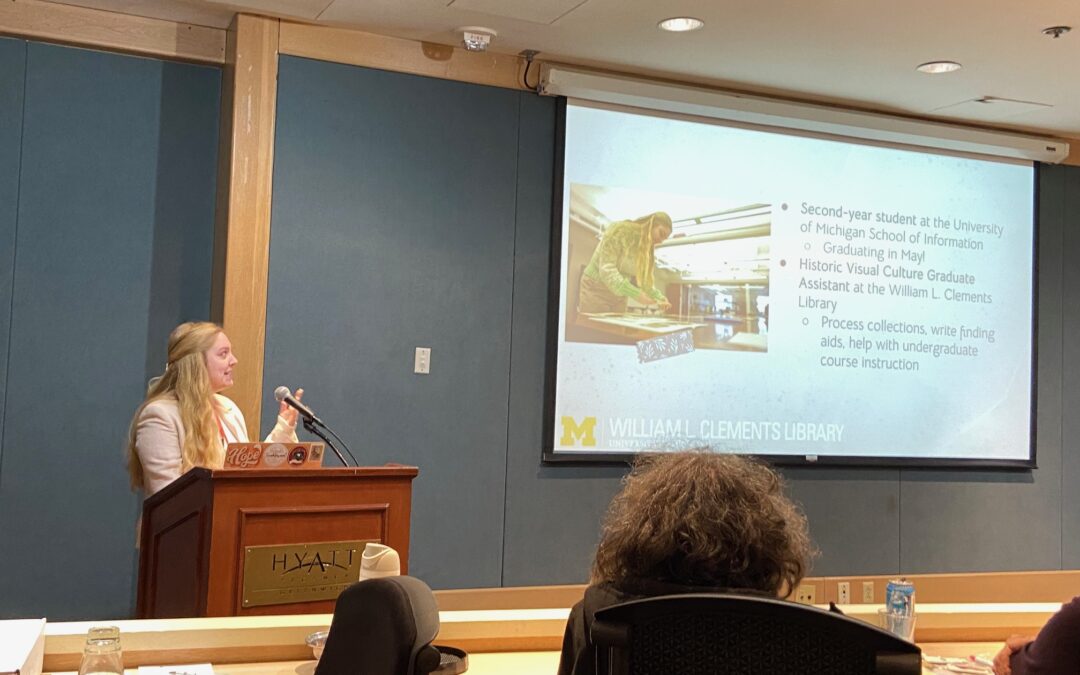
Graduate Student Intern Annika Dekker at Ephemera 45
Historic Visual Culture Graduate Assistant Annika Dekker describes her experience attending and speaking at Ephemera 45, the Ephemera Society of America’s annual conference.

Historic Visual Culture Graduate Assistant Annika Dekker describes her experience attending and speaking at Ephemera 45, the Ephemera Society of America’s annual conference.

The past year has been an incredibly busy time for the Clements Library’s Graphics Division, with over 80 new finding aids having been created for a variety of collections that can now be requested for use in the reading room. Let’s take a look at a few highlights!

Remember those attendance awards in elementary school? Recognition of student achievement is nothing new. Graduate student assistant Annika Dekker writes about Rewards of Merit, awards given to students or young people to recognize and congratulate them on an achievement, usually academic. These awards started in the 1600s, and have continued today. Learn more about the Rewards of Merit housed here at the Clements Library!

Political satire is not a gentle art—it is meant to leave a mark. Since the heyday of James Gillray and William Hogarth in 18th-century England, visual satirists have been able to “say” things about political leaders in their illustrations that would get writers censored (or worse). As such, it has played an important role in American political culture for over two centuries. Many of the qualities that we most readily associate with political leaders in our past come to us from satirical illustrations, not from things those leaders actually did. This exhibit invites you to think about how visual satire has shaped the way you think about political life in America. What can visual artists say about politics that writers can’t? What role does visual satire play in American political life in an age when most of what we read (and see) is online, rather than in a newspaper?

Laramy Fellow Johnathon Beecher Field recounts his visit to the Clements last fall for research for his book, The Objects of Settler Innocence. In this book, he argues that “a constellation of physical objects… work to obscure the realities of settler colonialism for its present-day beneficiaries.” This includes settler kitsch – “the ubiquitous renderings of the Anglo-Indigenous encounter as something that is impossible to take seriously.”


